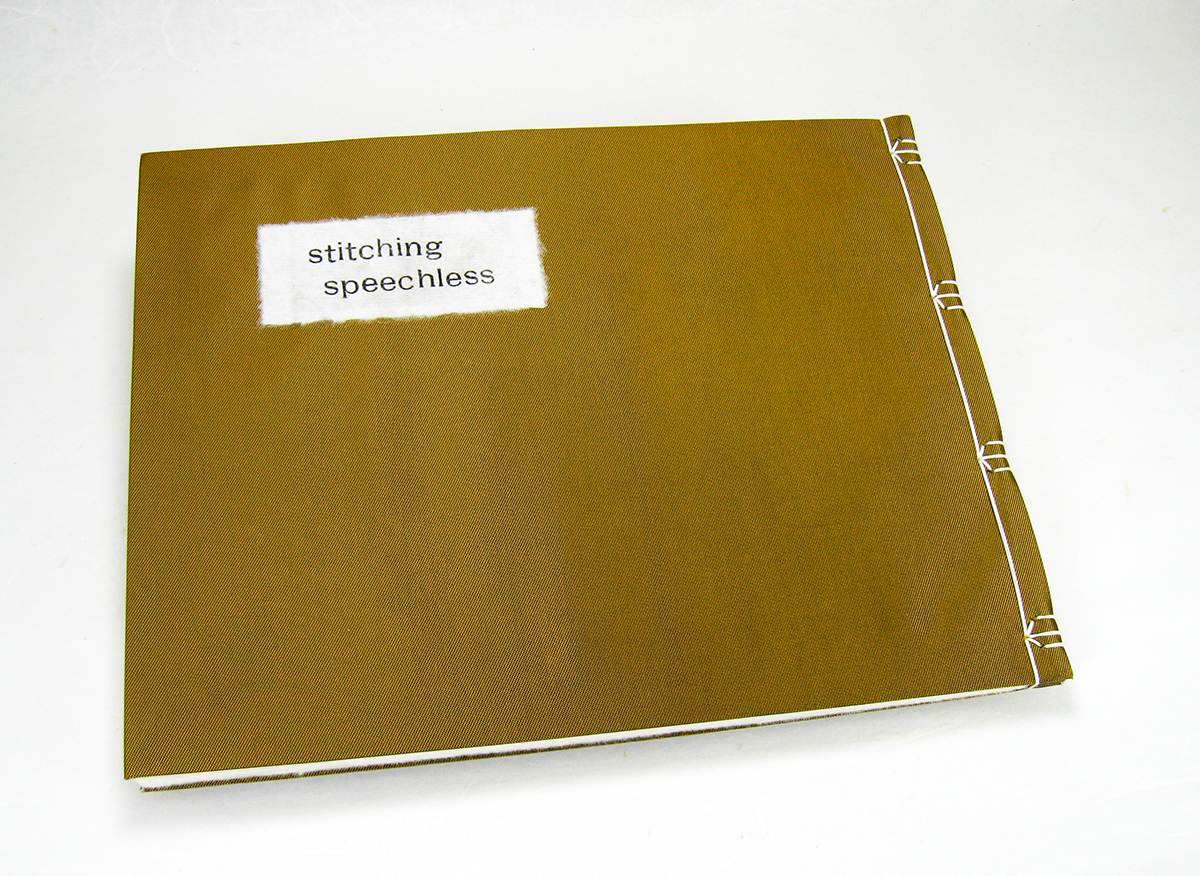



Your Custom Text Here
stitching speechless is a collaboration with Zen art scholar, poet, and artist Stephen Addiss, featuring a sequence of his haiku. We worked together to embody the poems in a book that would express the multiple traditions they draw from.
We used traditional Japanese materials and binding structure to evoke the origins of English-language haiku. The book’s spine is on the right edge so that it opens in the direction of traditional Japanese books. I hope that this disrupts the physical act of reading it, to emphasize the rich strangeness of this fragmentary form of poetry.
At the same time, Addiss was a student and colleague of John Cage, so stitching speechless also reflects the avant-garde path by which Zen arts have entered Western artistic practice. Cage’s influence is there in the chance methods Steve used to create the haiku. In addition, I use fire and smoke on the pages—one of Cage’s favored visual art techniques. Cage had a more direct influence as well: to determine what part of each page to burn, we used a sequence of randomized numbers that he and Steve had used for an earlier collaboration.
2011
7” x 9”
48 pp.
tortoise-shell stab binding
rubber-stamp type, burn and smoke markings
ed. of 14
$350
Buy a copy
stitching speechless is a collaboration with Zen art scholar, poet, and artist Stephen Addiss, featuring a sequence of his haiku. We worked together to embody the poems in a book that would express the multiple traditions they draw from.
We used traditional Japanese materials and binding structure to evoke the origins of English-language haiku. The book’s spine is on the right edge so that it opens in the direction of traditional Japanese books. I hope that this disrupts the physical act of reading it, to emphasize the rich strangeness of this fragmentary form of poetry.
At the same time, Addiss was a student and colleague of John Cage, so stitching speechless also reflects the avant-garde path by which Zen arts have entered Western artistic practice. Cage’s influence is there in the chance methods Steve used to create the haiku. In addition, I use fire and smoke on the pages—one of Cage’s favored visual art techniques. Cage had a more direct influence as well: to determine what part of each page to burn, we used a sequence of randomized numbers that he and Steve had used for an earlier collaboration.
2011
7” x 9”
48 pp.
tortoise-shell stab binding
rubber-stamp type, burn and smoke markings
ed. of 14
$350
Buy a copy